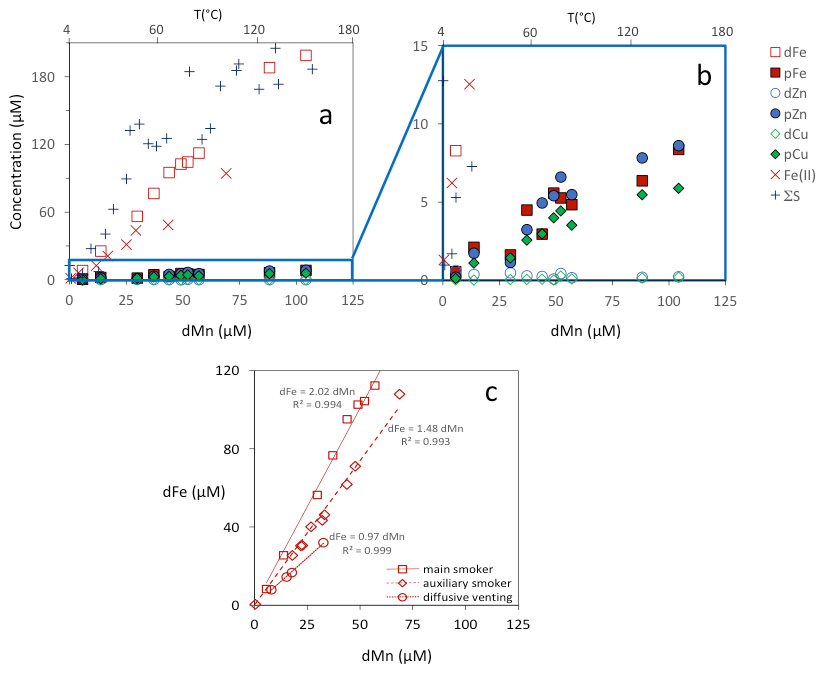Low iron sulfide precipitation rate in hydrothermal fluids during the early stage of mixing
Waeles and co-authors (2017, see reference below) report for the first time on the dissolved-particulate partition of iron (Fe) after in situ filtration at the early stage of mixing of hydrothermal fluids with seawater. This study was performed at three hydrothermal fields on the Mid-Atlantic Ridge (Lucky Strike, TAG and Snakepit). For the different vents examined, Fe predominantly occurred (>90%) in the dissolved fraction and dissolved Fe showed a strictly conservative behavior, arguing for low iron-bearing sulfide precipitation in basalt-hosted systems with low Fe:H2S ratios. The small part of Fe being precipitated as sulfides in the mixing gradient (<10%) is restricted to the inclusion of Fe in minerals of high copper (Cu) and zinc (Zn) content because the kinetic of pyrite formation is slow compared to the time scale of mixing processes. Their works also show that secondary venting, i.e. lower temperature clear smokers and diffusive venting, is a source of Fe-depleted hydrothermal fluids and provide new constrains on Fe fluxes from hydrothermal venting one of the main present issue of the GEOTRACES programme.

Figure: Dissolved Fe (dFe), particulate Fe (pFe) and other chemical species concentrations measured at Aisics, a black smoker vent on the Lucky Strike vent field. Concentrations are given as a function of temperature and dissolved Mn (dMn) which is used as the conservative tracer. a) Dissolved Fe occurs essentially as Fe(II) species and coexists with sulfide until the coldest part of the mixing gradient due to the kinetically limited formation of pyrite particles. b) As opposed to Fe, Zn and Cu precipitate quantitatively before venting and/or during the very early stage of mixing (T > 150°C); Zn and Cu were mainly found as particulate rather than as dissolved species over the studied gradients. c) The data also showed that secondary venting, i.e. lower temperature auxiliary smokers and diffusive venting, is a source of Fe-depleted fluids. Click here to view the figure larger.
Reference:
Waeles, M., L. Cotte, B. Pernet‐Coudrier, V. Chavagnac, C. Cathalot, T. Leleu, A. Laës‐Huon, A. Perhirin, R. Riso, and P. Sarradin (2017), On the early fate of hydrothermal iron at deep‐sea vents: a reassessment after in‐situ filtration, Geophysical Research Letters. DOI: 10.1002/2017GL073315.
